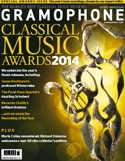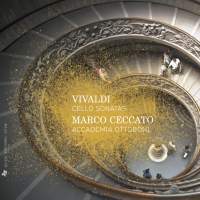Texte paru dans: / Appeared in:
*

GRAMOPHONE (Awards/2014)
Pour s'abonner /
Subscription information
Zig-Zag
ZZT338

Code-barres / Barcode
: 3760009293380 (ID422)

Reviewer:
Julie
Anne Sadie
As with a
Bach Suite, learning a Vivaldi sonata is a rite of passage for every cellist.
While not often played in public recitals, Vivaldi sonatas have been recorded by
recent generations of period players, including Susan Sheppard (CRD, 12/87) in
the 1980s, Christophe Coin (L’Oiseau-Lyre, 4/89), David Watkin (Hyperion), Anner
Bylsma (DHM/Sony, 6/90) and Pieter Wispelwey (Channel Classics, 11/94) in the
’90s, Jaap ter Linden (Brilliant Classics) last decade and most recently by
Bruno Cocset (Agogique, 2012).
This new recording by the French-born cellist Marco Ceccato draws from a wider than usual selection of Vivaldi sources – all in manuscript – to create a new set of six sonatas, some more familiar than others. According to the booklet writer, Olivier Fouré, the set we know best was first published in Paris in 1739-40 without Vivaldi’s permission and transmits unsound, ‘corrected’ versions. The CD is rounded off by a newly composed Prelude, inspired by a two-bar Vivaldi incipit included in a 1766 German publisher’s catalogue of the now-lost RV38, by Olivier Fouré, who dedicates it to the opportunistic French publisher Madame Boivin.
Ceccato is a fine player with a genuine affinity for Vivaldi. His readings are elegant and much the most poetic I have heard. The well known A minor Sonata (RV44) is a case in point: to the opening Largo he brings a reasoned and – in the secondary theme – even conciliatory interpretation, to the first Allegro a delightful mixture of swagger and rubato, and to the second Largo judicious use of silence. Here and elsewhere his ornamentation in the repeats is never merely formulaic and often brings unexpected delight.
So convincing is his sense of the music that he can introduce brief moments of portamento – something no one else has dared to do (trs 11 and 23) – and even subtly diminish his tone on weak cadences alla francese (trs 9 and 10). What’s more, Vivaldi sounds better for it. Ceccato produces a rich, compelling tone when playing melodic material and relies on an off-the-string bow stroke to produce a drier, more percussive sound when accompanying himself, switching effortlessly back and forth between them. The refreshing musical coherence he achieves with these tricks of his trade is what makes this recording so special. His continuo ensemble, Accademia Ottoboni, accompany sympathetically, only occasionally emerging from the background (the harpsichord in tr 23 and the second cello in tr 24). This is one of this year’s must-hear recordings!
Cliquez l'un ou l'autre
bouton pour découvrir bien d'autres critiques de CD
Click either button for many other reviews


